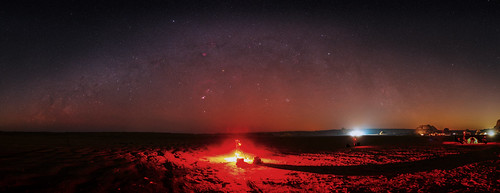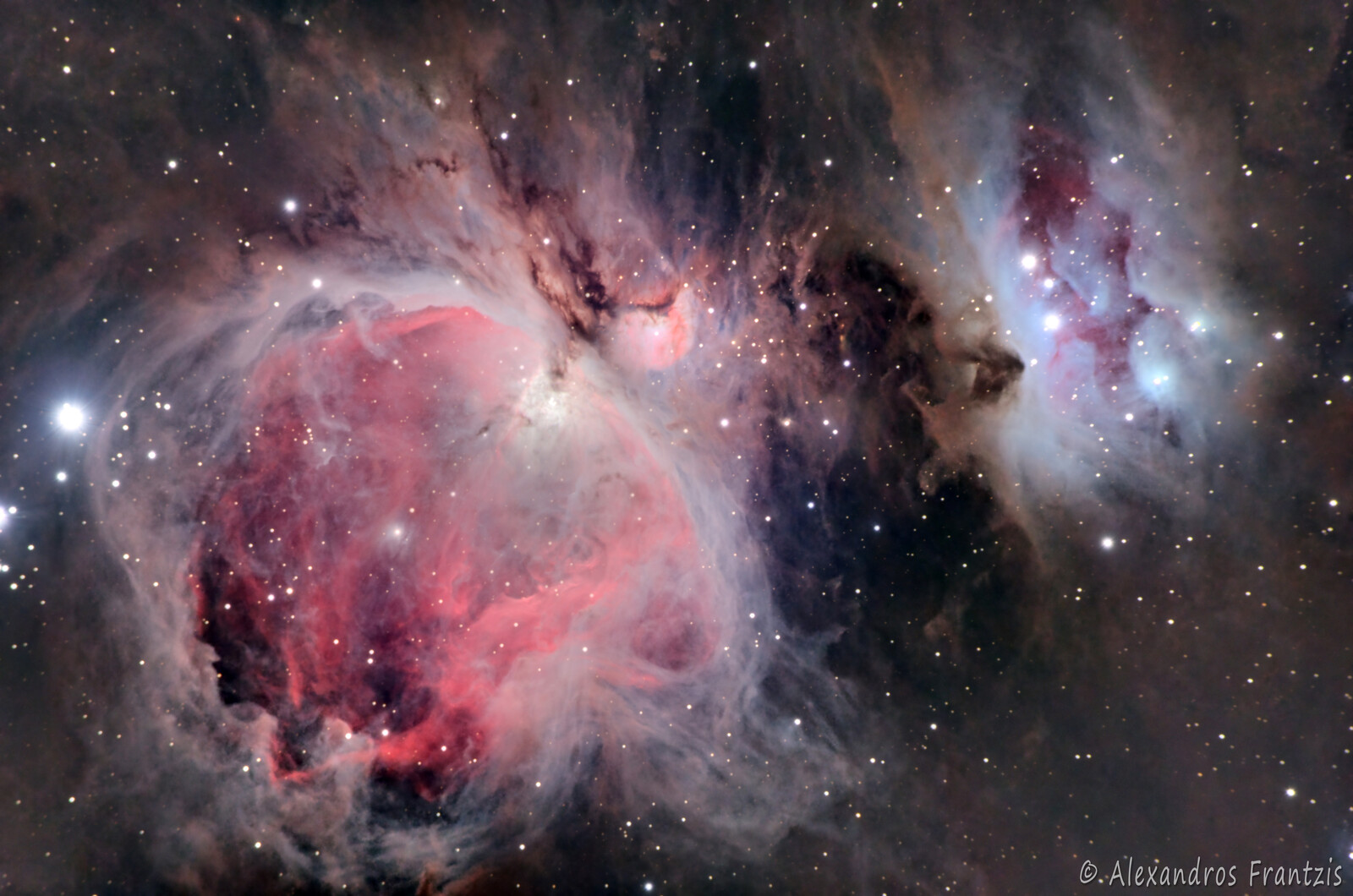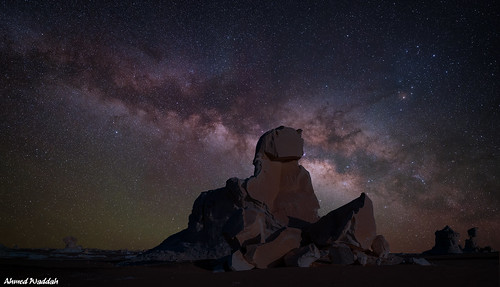The ghost of cassiopeiae/Gamma cas nebula IC59/IC63/LBN623/Sh2-185 (c-lsho)
Also includes: gamma cassiopeiae
Total integration: 53.8 hours/3225 minutes (221x5m = ~18.4h for S2 + 297x5m = ~25h for Ha + 127x5m = ~11h for O3).
Camera: QHY163M (16mp mono) CMOS cooled to -15 degrees C.
Telescope: Takahashi FC100DF Steinheil fluorite doublet apochromat refractor @ f/7.4.
Reducer: None.
Mount: Paramount MyT.
Filters: Astrodon 5nm Ha, 3nm O3, 3nm S2.
Software: TheSkyX Pro, SharpCap, PixInsight, Topaz Studio 2.
Inline image with reduced quality uploaded to the forum. Full resolution images for the entire series are available at
https://www.astrobin.com/nouak1/ and the main image only at:
http://ram.org/images/space/scope/1.7.4 ... _53.8h.jpg
The gamma cas nebula gets its name from the bright star gamma cassiopeiae (aka Navi) observed in the bottom right quadrant in the image. It is part of the well-known W-shaped asterism in the Cassiopeia constellation and located 550 years from earth.
The singular nebula actually consists of two distinctive emission nebulae, IC59/Sh2-185 (center and right) and IC63 (lower left). They are strikingly illuminated by the bright blue star which is 34,000 times more luminous and has 17 times our Sun's mass. The 1.5-3 magnitude star's energy, caused by its extremely rapid rotation rate that distorts its appearance, is also responsible for pushing and dispersing the emissions of these nebulae into the interstellar medium even though they are located light years apart.
This series of images were taken without my FC35 reducer, going from the normal f/4.9 to f/7.4. As a result, there is a large number of stars captured which I had to repeatedly reduce the size of to make it less busy. The series contains a Ha-only image (A); PixInsight-only processing with (B) and without (C) star reduction, TopazStudio 2 processing with increasing blue tone without star reduction (D) and with (E-H). There's also one with more traditional colours (J).
There is some reflection signal in here that I hope to come back to without narrowband filters and will try to overlay all the channels. I chose to use pale colours rather than the traditional bright golden-blue Hubble palette since there was a strong overlap of the Ha and S2 signals, overwhelming the O3, and I also wanted to choose a processing style that fit the "ghost nebula" monicker this deep sky object is known by.
As always, thanks for looking!
 Whales Valley Winter Milky Way by Ahmed Waddah, on Flickr
Whales Valley Winter Milky Way by Ahmed Waddah, on Flickr

 Sphinx Milkyway in White Desert by Ahmed Waddah, on Flickr
Sphinx Milkyway in White Desert by Ahmed Waddah, on Flickr